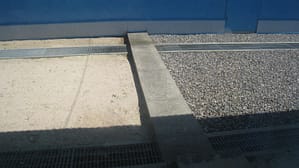When constructing concrete slabs, the space in between them is called the joint. The purpose of the joint is to allow for movement and to prevent cracking that can occur due to temperature changes, settling, and other factors. There are several materials that can be used to fill the joint, each with its own unique properties and benefits. In this article, we will discuss what to put between concrete slabs in civil engineering projects.

- Asphalt
Asphalt is a common material used to fill the joint between concrete slabs. It is easy to install, flexible, and durable, making it a popular choice for many construction projects. Asphalt can be poured into the joint and then leveled off to form a smooth surface. It is also waterproof and resistant to weathering, making it a good choice for outdoor concrete slab projects.
- Rubber
Rubber is another popular material used to fill the joint between concrete slabs. It is flexible, durable, and resistant to water, making it ideal for use in areas where water may be present. Rubber can also be cut to fit the joint, making it an ideal choice for projects with irregularly shaped concrete slabs. Rubber is also easy to install, making it a cost-effective option for many construction projects.
- Polyurethane
Polyurethane is a synthetic material that can be used to fill the joint between concrete slabs. It is flexible and durable, making it ideal for use in areas that are subject to heavy foot traffic or other types of heavy loads. Polyurethane is also resistant to water, chemicals, and UV light, making it a good choice for outdoor concrete slab projects.
- Silicone
Silicone is another synthetic material that can be used to fill the joint between concrete slabs. It is flexible and durable, making it ideal for use in areas that are subject to heavy foot traffic or other types of heavy loads. Silicone is also resistant to water, chemicals, and UV light, making it a good choice for outdoor concrete slab projects.
- Epoxy
Epoxy is a two-part resin that can be used to fill the joint between concrete slabs. It is flexible and durable, making it ideal for use in areas that are subject to heavy foot traffic or other types of heavy loads. Epoxy is also resistant to water, chemicals, and UV light, making it a good choice for outdoor concrete slab projects.
6.Gravel
Gravel is a more durable option than sand and is commonly used for filling the space between concrete slabs in driveways, patios, and walkways. It provides a stable base for the slabs and is not easily compacted. However, gravel can be more difficult to work with than sand and can also create a rough surface between the slabs, making it less suitable for areas with heavy foot traffic.
7.Crushed stone
Crushed stone is another option for filling the space between concrete slabs and is often used in areas with heavy loads and high traffic. It is more durable than sand and gravel and provides a stable base for the slabs. However, it can be more expensive than sand and gravel and can also create a rough surface between the slabs.
8.Geotextile fabric
Geotextile fabric is a synthetic material that is often used between concrete slabs in areas with heavy loads and high traffic. It helps to prevent the soil from shifting and settling and also helps to drain water away from the concrete slabs. However, geotextile fabric can be more expensive than sand, gravel, and crushed stone and can also be difficult to work with.
9.Foam
Foam is a lightweight and flexible material that is often used between concrete slabs to provide insulation and prevent soil settling. It is a good option for areas with heavy loads and high traffic, as it helps to distribute the weight of the slabs evenly and prevent them from sinking. However, foam can be more expensive than sand, gravel, and crushed stone and can also be difficult to work with.
